Anthology series are all the rage now; Shudder has Creepshow, CBS rebooted Twilight Zone (again), Hulu started Monsterland, even Quibi has 50 States of Fright. Last year, AppleTV+ and Steven Spielberg brought Amazing Stories back to TV, reprieving the NBC series by giving it a new opportunity and home. Today’s Episode of the Week, “Mirror, Mirror,” is among the best of the original series, though maybe slightly dated by today’s standards.
During Amazing Stories’ initial two-season, 45-episode run, it cast stars like Kevin Costner, Christina Applegate, and Mark Hamill while boasting a jaw-dropping list of directors such as Clint Eastwood, Joe Dante, Tobe Hooper, Brad Bird and even Spielberg himself. “Mirror, Mirror” is no different. Directed by Martin Scorsese in 1986, with a story by Spielberg, the episode stars Sam Waterston as a horror novelist who believes he can no longer get scared, with Helen Shaver and an unrecognizable Tim Robbins co-starring.
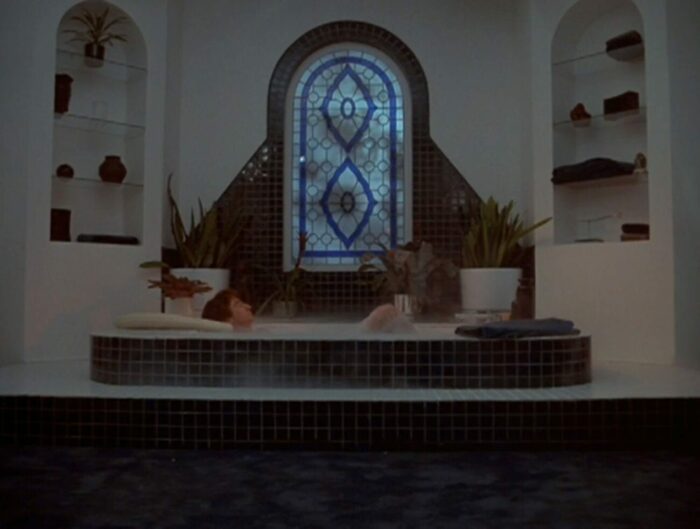
By this point in Scorsese’s career he had already racked up a number of brilliant cinematic achievements: Taxi Driver, Raging Bull, and Mean Streets, just to name a few. Coming off of the financial flop that was The King of Comedy, Michael Koresky insists in this article, the studios wanted to know “if he could play the Hollywood game” when all Scorsese wanted was to make his passion project, The Last Temptation of Christ. His first foray into television wasn’t exactly what he had hoped and he didn’t return to direct in the medium (outside of documentaries) until HBO’s Boardwalk Empire in 2010. However, “Mirror, Mirror” shows the director’s eye for the cinematic, even at a time when the medium wasn’t well-suited for it.
“Mirror, Mirror” opens on a scene from the 1966 classic B-movie The Plague of Zombies, as a man in a graveyard becomes slowly surrounded by walking corpses. Cut to a terrified Jordan Manmouth (Waterston) in a sweaty panic, gasping for air. These dreams of Jordan’s, right from the start, are proof that the fiction writer knows what’s scary and as a result turns his nightmares into a bestseller called Scream Dreams, presenting his newest offering on The Dick Cavett Show.
As Jordan returns home via limousine service, his driver asks him if he really never gets scared anymore. Jordan responds saying the only things that scare him are agents, ex-wives, and journalists, citing his disdain for publicity tours. Immediately, I get the idea of Sutter Cane in In the Mouth of Madness, hiding away from publishers and publicists while his characters drive everyone insane.
When Jordan arrives home to an upscale, emotionless late ’80s estate, he’s greeted by his self-described “biggest fan” who only wants an autograph and for Jordan to read the book he inspired. The exchange goes rudely, with Jordan telling him to get off his property and buy a typewriter (like I said, it’s a bit dated). I got instant Misery vibes figuring that the episode probably aired post-release of Stephen King’s book, but Misery wouldn’t even publish until 1987.
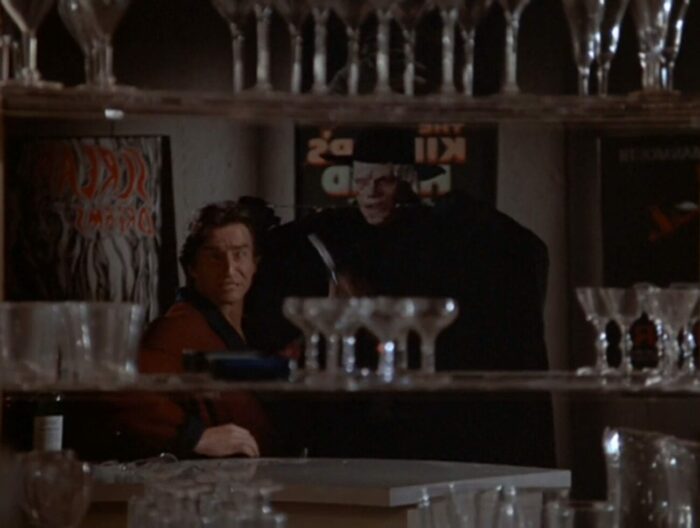
We get the sense of the real vanity that Scorsese and teleplay writer Joseph Minion, who also worked on After Hours with Scorsese, are trying to get you to relate to. The title of the episode as well as the original “Snow White” line, “mirror, mirror on the wall…” do not exactly refer to beauty on the outside, but that of a generally decent human being. Jordan’s ego and above-it-all attitude show him for the contemptuous and ugly individual he is.
Jordan tries to relax after the exchange and heads for the bath. Becoming disquieted by a noise, he finishes bathing and moves to the vanity to brush his teeth. Through the mirror he sees a man dressed in dark clothing leap through his window; when he turns his head to where the event is taking place in reality the man isn’t there. At first, he thinks the fan from outside has returned after he treated the fan so poorly. Jordan describes this theory to his friend Karen’s brand-new answering machine on his modern, corded landline.
Jordan calms down, thinking maybe it was nothing and he’s just tired from the book tour. He sits at his bar and pours himself a drink. The bar in front of him is backed by mirrored glass, and as he takes his first drink, he sees the mangled face of his intruder sneak up on him. Paralyzed with fear, Jordan watches as the creature makes its way toward him, brandishing a garotte like some kind of monster hitman. When he turns to swing an empty bottle, the entity is gone again. Turning back to the looking glass brings the creature back causing Jordan to fire his nightcap at the image.
As Jordan breaks the glass behind the bar during his second encounter with what is listed on IMDb as “Jordan’s Phantom” (Tim Robbins), we notice three posters hanging in the background of Jordan’s living room. Noting his name at the top of the first poster, we can assume these are his books. I figured these titles, Eyes of Terror, The Killer’s Hand, and his new book, Scream Dreams, may be sly nods to other works, similar to the nods left in Blow Out by Brian DePalma.
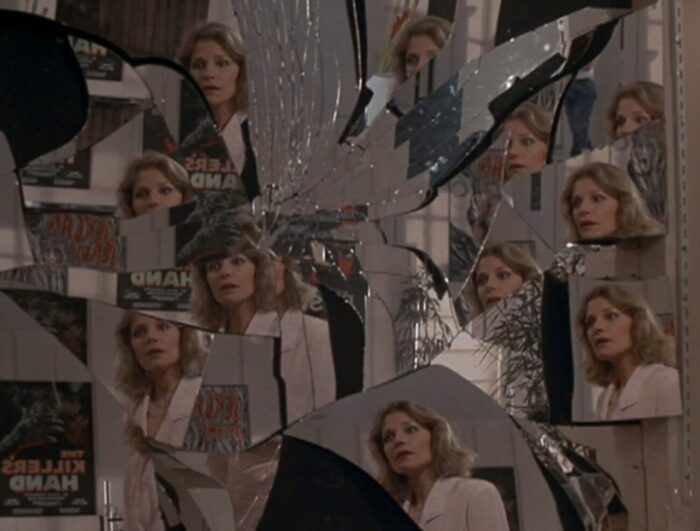
While researching, I found that Eyes of Terror may represent an episode of the same name of Barnaby Jones, in which Barnaby has to help a mentally handicapped man who becomes wrongfully accused after stumbling upon a murder scene. I wasn’t feeling the connection here. Same can be said for Scream Dreams unless Scorsese is a fan of the 1980 Ted Nugent album, Scream Dream.
The one poster that did send me down a bit of a rabbit hole was that of The Killer’s Hand. Upon searching, I found a 1981 horror film starring Michael Caine and directed by Oliver Stone, titled The Hand. The film, about a comic book artist that loses his hand in an accident only to find he’s subconsciously murdering people, may be of some slight resonance, at least in the way that the characters both come from a creative background. Digging deeper, I found Stone, in an interview with Matt Zoller Seitz, saying he was actually a student in Scorsese’s Sight and Sound class at NYU. Also, by this point Stone had made Seizure, a film very similar to the premise of “Mirror, Mirror” about a horror novelist terrorized by characters from his horror novels. It may only be coincidental, but it was a fun bit of dot connecting.
Jordan falls asleep on the mirrorless stairs with a wrench as he waits for the LAPD busy message to yield to a human voice. Waking the following morning, seeing the horror of the bar shattered at his feet, he shakes it off again and heads for a meeting in the city. There are a few wonderful shots in the cinematography here that are fantastically arranged. The few frames add a real sense of what we’ve all come to learn about Scorsese films and put a touch of it on the small screen.
Jordan sees his Phantom a few more times, in a well-shot parking garage sequence, before accosting an officer and being thrown in jail. Karen (Helen Shaver) bails him out and tells him he’s obviously exhausted, while she drives him home and mocks him for saying, “Nothing ever scares me.” The sheer joy of a horror character that perhaps comes from Jordan’s own writing got me thinking again about Stephen King. King’s book The Dark Half is about a writer who throws a funeral for his pen name after having the alter-ego outed, only to have it return and create chaos for its creator. Though in King’s book it’s by way of a murder spree and an absorbed fetal twin, at least part of it seemed very similar to this situation. Though again, The Dark Half wasn’t published until 1989.
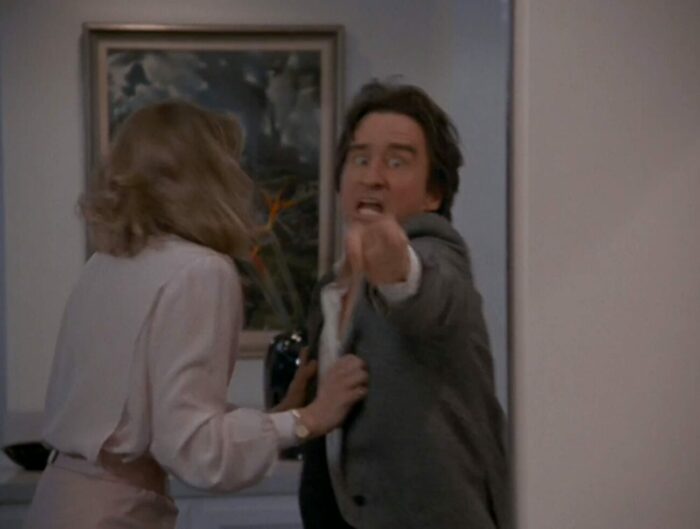
It seemed like if there were any King references in the story, maybe I should have looked at the books King created prior to 1985, but I came up empty. One thing I did find, in an interview with Sandy Cohen, was that the author still gets scared while writing his stories, citing Danny entering room 217 in The Shining as one of his biggest scares. In this way, I suppose that makes King the anti-Jordan Manmouth.
As Karen and Jordan arrive back at the house, Karen inspects the rooms and certifies what she already knows. Jordan loses his calm standing next to Karen in the bathroom, when he sees the Phantom making its way toward him again. Karen, rattled, doesn’t see anything and doesn’t know how to help Jordan, so she covers and hides all of the mirrors in the house, reminiscent of the Jewish tradition of sitting Shiva, where the observance of a loved one’s passing should be mourned without vanity.
Jordan’s egotism for no longer feeling fear, as well as being somewhat of an uptight jerk to his fan at the start of the episode, gives way to the moral folktale aspect via some Old Testament values. Jordan’s selfish actions result in his punishment by the Phantom, and Karen covering the mirrors foreshadows Jordan’s remaining moments. Being put to bed by Karen, Jordan kisses her, seeing the Phantom in her eyes who finally strangles Jordan with that garotte.
Jordan transforms into his stalker and Karen can’t believe her eyes. The Phantom groans and shrieks around the room—is he still Jordan? Before we can find out, the monster leaps out of the giant window and ends the nightmare. In this, Jordan becomes as ugly on the outside as he is to his fans.
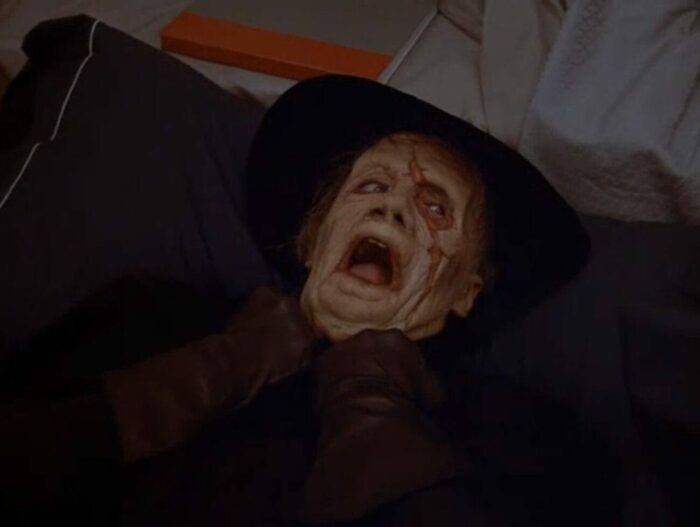
In the final scenes, we can see the clothes Robbins wears as Jordan’s Phantom and they have a history in horror. The outfit is the same (I’m not sure if it’s the actual same or just the same design) as Vincent Price’s in House of Wax; meanwhile, the makeup and effects department give the Phantom the iconic look of Lon Chaney in Phantom of the Opera. It all comes together in a wonderful package, beautifully directed and wonderfully acted.
As far as the mirrors of “Mirror, Mirror” are concerned, it’s nothing new in terms of theme. By this point in the ’80s, Poltergeist, Phantasm, and The Watcher in the Woods had all been released using reflections that weren’t there. Plenty would later follow with Evil Dead II, Oculus and Mirrors, just to name a few.
Amazing Stories’ “Mirror, Mirror” is currently available to watch for free at NBC.com.


When I was a kid, I happened to catch this episode on TV late at night, and it scared the pants off of me! I literally couldn’t bring myself to look into mirrors for a long time after seeing it. I was just so unnerved! (and I was a kid). Just last week I happened to revisit this episode for the first time in a while, giving it a rewatch I realized for the first time who actually directed it! Very good timing that you would post an article today. Great stuff!